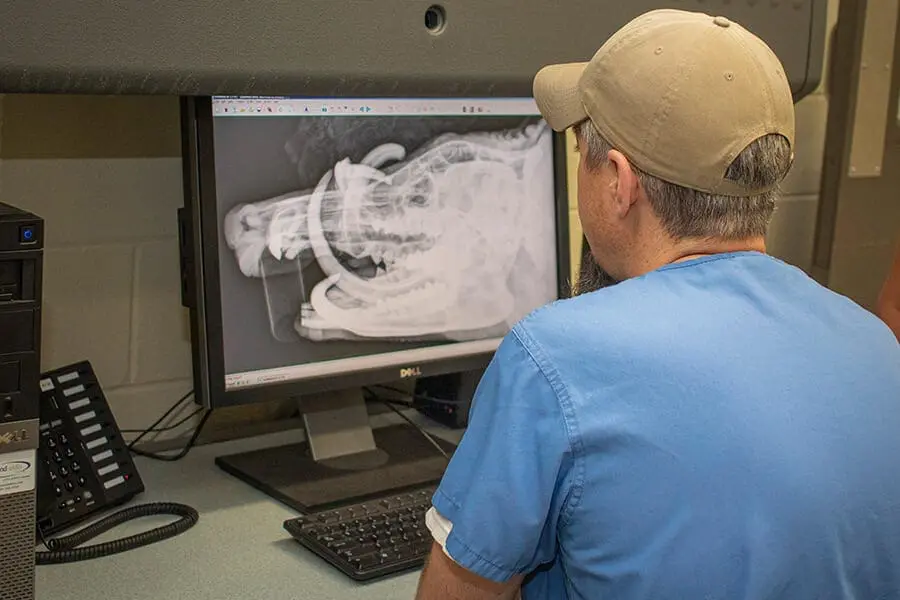
This post contains images of a veterinary procedure with a small amount of blood.

Meru prior to the procedure.
Sporting a pair of upper canines that grow through the top of its snout and curve back toward its skull, the babirusa just might be the strangest pig in the world. Though this characteristic sometimes appears in females, males’ tusks are much longer and more pronounced.
Meru, our four-year-old male north Sulawesi babirusa, somehow cracked his upper left tusk earlier this year. The end portion continued to grow but was now angled straight toward his skull, and keepers sometimes noticed bleeding at the breakage site. Our concerns with this issue were twofold: that this tusk would pierce his skull and that the “break” would become infected.

Dr. Zachariah examines a radiograph of Meru’s skull.
It was clear that Meru needed veterinary attention, and he was anesthetized and brought to the Harris Animal Care Center for treatment. But before we could fix the problem, we needed to know exactly what we were dealing with. Through radiographs, we discovered that the two halves of the broken tusk were only connected by soft tissue and the end portion could easily be removed without causing much pain when Meru woke up.

Our veterinarian used a bone clamp and specialized wire to remove the end portion. We also trimmed off the tip of Meru’s other upper tusk to keep its growth in check for the time being.
Animal care staff used this opportunity to do some things they typically can’t, like filing down his hooves, administering vaccines, drawing blood and conducting a general wellness exam that involved taking a close look at his eyes, mouth and joints. Fortunately, Meru appears to be in great health overall!
Meru was returned to his habitat and recovered from anesthesia without issue. He was prescribed an antibiotic to protect his tusk from infection while it heals. We’ll continue to keep a close eye on his canines.
